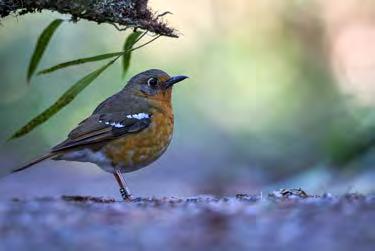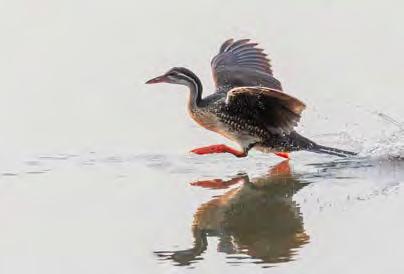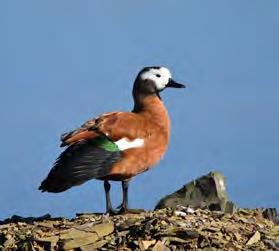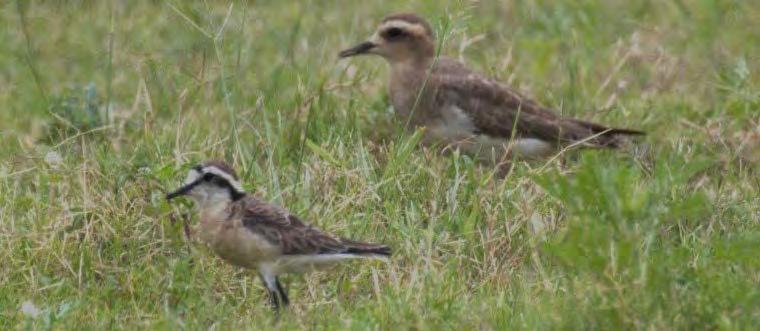
3 minute read
Diving Deep into some Zululand Hot-spots
From 16-19 December, a group of avid birders visited various birding sites in Zululand, South Africa. Led by experienced guide, Dave Rimmer of Kingdom Birding Ecotours, we visited several birding sites, including Emoyeni, Mtunzini, Manyoni Game Reserve, the Lake St Lucia False Bay section of the iSimangaliso World Heritage Site, and Pongola Nature Reserve. The weather was a mix of bright sun, cloudy and cool, and pouring rain, but we were prepared for all conditions. Our primary goal was to spot new bird species, and we were fortunate enough to get both bird and butterfly lifers. In total, we visited eleven different birding sites over the course of four days.
Our first day began with a visit to Emoyeni grasslands, inland of Fairbreeze mine near Mtunzini on the lookout for Black Coucal, a lifer species for most of us in the group. The bird obliged by sitting in plain sight, albeit at a distance. We also spotted two swallow species, Redbreasted and White-throated. Following our coucal sighting, a visit to uMlalazi Nature Reserve in Mtunzini to see if we could find the visiting juvenile Crab-plover. To see this uncommon KZN visitor required an endurance walk - a hard one hour march through soft sand at mid-tide, which some in the group chose to do barefoot, resulting in blisters. The reward was the sight of the plover at close range, and this made up for any hardship. We also observed a Palm-nut Vulture foraging on the sandbank, as well as a few Grey Plover and Sanderling. After three hours on the hot beach, we retired to the semi-forested estuary fringe, where we were entertained by several Blue-cheeked Bee-eaters.
Advertisement
Black coucal (below top left)
Palmnut Vulture (below bottom left)
The evening night drive in Manyoni Game Reserve yielded several owl species, including Wood, Barn, Scops, and Southern Whitefaced, and some Spotted Thickknee. A Southern Foam-nest Frog and Flap-necked Chameleon added interest to the evening. Unfortunately, nightjars were scarce. We finally returned to our accomodation around Mkhuze for the evening.
Our second day had us motoring in our own vehicles to Pongola Game Reserve (a stone’s throw from the Golela border post with eSwatini), where we boarded the Manyoni game drive vehicle. The weather was gloomy with a few scattered showers, but this did not deter us from enjoying this spectacular reserve. A variety of bird species was seen despite the unfavourable weather conditions. On our return to our accommodation, which we managed to do just before the heavens opened, we were delighted to encounter (by nearly running over) a 2m-long Black Mamba, a lifer for Dave Rimmer!
The third day was the busiest, driving to six different birding sites with the reward of some fantastic sightings. We began by visiting the False Bay section of the iSimangaliso Wetland Park which is situated on the north-western shores of the Lake St Lucia Estuary, The target bird here was Neergard’s Sunbird, which was found, although I was unable to get a decent shot. A Purple-banded Sunbird was discovered occupying a nest just above head-height, and a couple of the Zululand special African Yellow White-eyes were found. The weather then turned for the worse, but cleared up somewhat when we reached our next stop, the pans on the Nibela Peninsula. The birdlife was fantastic, with pelicans, pratincoles, and plovers in abundance. This was one of those times when you put your camera down and just enjoy the spectacle…a top birding site!
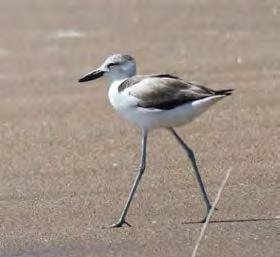
From Nibela, we moved on to Mpempe Pan where we were able to spot a Caspian Plover, a summer visitor that had temporarily taken up residence in the area. We were also able to spot the smaller Kittlitz’s Plover and the more localised Senegal Lapwing, as well as plenty of Blue-cheeked Bee-eaters. Our next stop was at Muzi Pan, where I took a detour from the group to focus on my interest in butterflies, a pity in a way as I missed great sightings of Allen’s Gallinule.
In our quest to find a Sooty Falcon, we took a detour to Mbazwana, but unfortunately came away empty-handed. However, we were able to spot many butterflies including Boisduval’s Tree-nymphs and Dancing Telchinias.
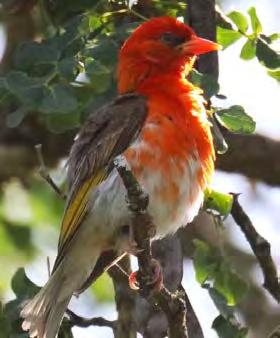

On our way back to Bayala, we were lucky enough to spot a Broad-billed Roller on the gated and fenced public road through Phinda GR, which was a lifer for most of our group. Although we were not able to alight from our vehicle between the gates due to the threat of the “Big 5,” the sight of the Broad-billed Roller made the trip worthwhile.
On day 4, we started early and arrived at Manyoni by 5am, where we were greeted by the sight of an adult and two young Black-backed Jackals. We also encountered a belligerent large mammal that blocked our path for several minutes before veering off into the undergrowth. Despite spending the rest of the morning searching for African Broadbill, we were unable to to find one. road-rage fueled roadhogs. However, the recounting of all the wildlife we had seen, particularly the memorable lifers, made the return journey bearable.
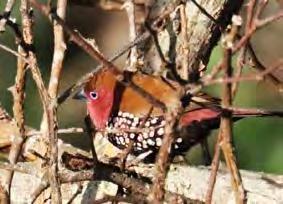
Overall, it was a truly worthwhile trip, made even better by the company of like-minded individuals who shared a passion for nature. Thanks to Dave our guide for providing us with the opportunity to witness all these magnificent creatures in their natural habitat.
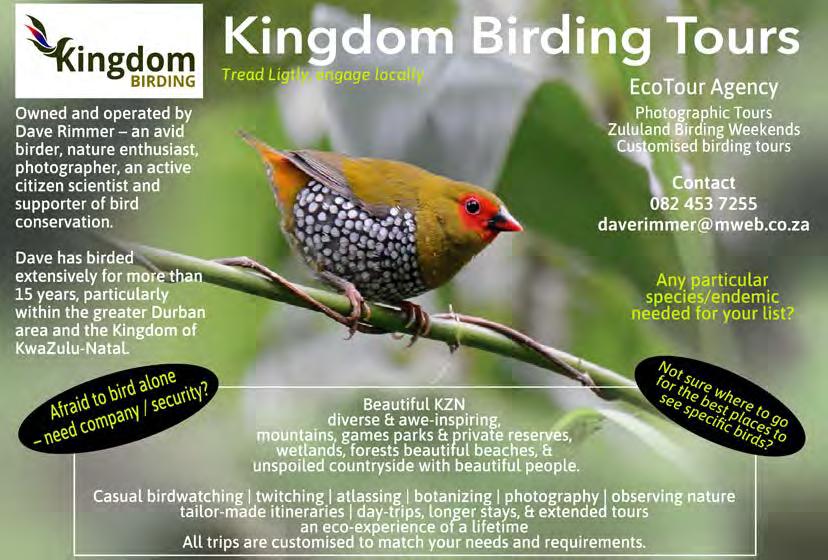
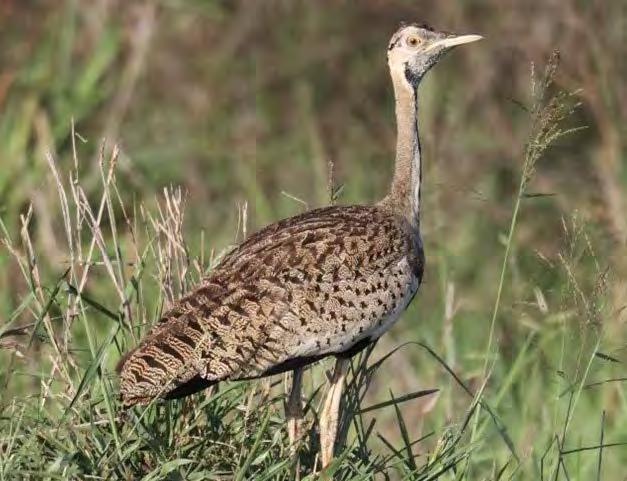
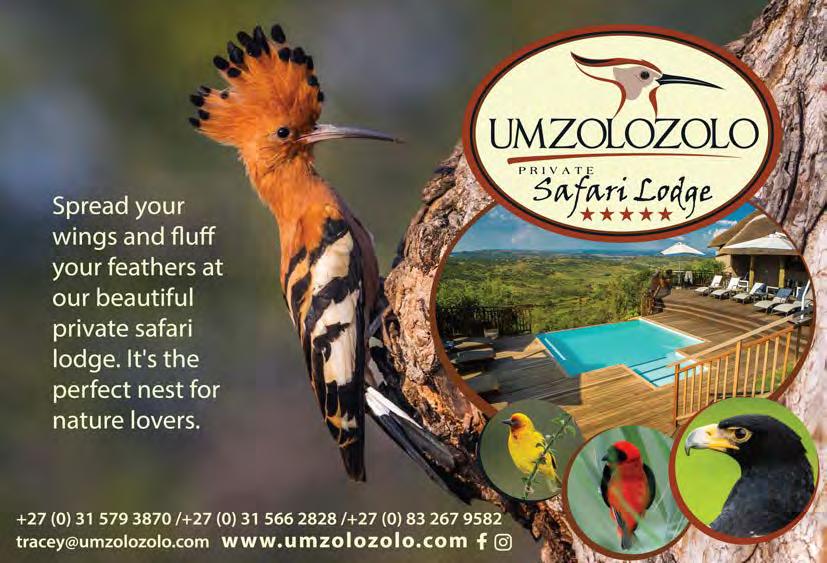
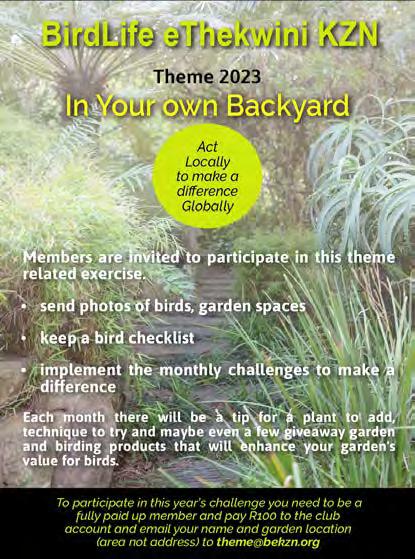
Send your interesting sightings, rare bird photos or just great pics of birds seen while you are out and about birding. Send any contributions in following the guidelines and deadline dates on page 2.
